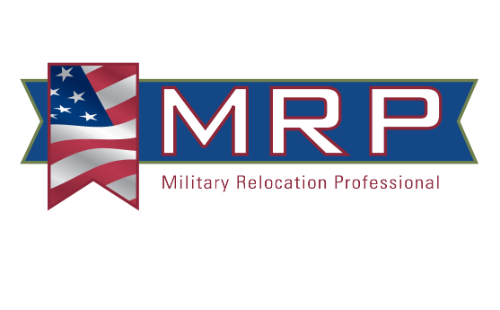Moving is a hallmark of military life. Whether it’s a permanent change of station (PCS) or a deployment, service members and their families often find themselves uprooting their lives and starting anew in unfamiliar surroundings. Navigating these transitions can be daunting, but with proper planning and resources, it can also be a smooth and manageable process. In this comprehensive guide, I’ll explore the various aspects of military relocation, from preparation and logistics to settling in and making the most of your new community.
-
Preparation Phase
- Research and Planning: The first step in any successful relocation is thorough research and planning. Service members should familiarize themselves with their new duty station, including its location, climate, housing options, job options for a spouse, schools, healthcare facilities, and recreational opportunities. Online resources such as military installation websites, forums, and social media groups can provide valuable insights and firsthand experiences from others who have been stationed there. A realtor trained as a Military Relocation Specialist is also a valuable information resource.
- Budgeting and Financial Planning: Relocation expenses can add up quickly, so it’s essential to budget accordingly. Service members should take advantage of relocation allowances and benefits offered by the military, such as the Basic Allowance for Housing (BAH), Dislocation Allowance (DLA), and Temporary Lodging Allowance (TLA). Additionally, creating a detailed budget that accounts for moving costs, housing expenses, and any unexpected expenses can help alleviate financial stress during the transition.
- Organizing Documents and Records: Moving often involves a significant amount of paperwork, including orders, medical records, school transcripts, and household inventory lists. Service members should keep these documents organized and easily accessible throughout the relocation process to ensure a smooth transition and facilitate any necessary administrative tasks.
-
Logistics Phase
- Securing Housing: Finding suitable housing is a top priority for service members and their families during a relocation. Military housing options vary depending on the duty station, ranging from on-base housing to off-base rentals or purchases. Service members should research their options, consider factors such as location, amenities, and commute times, and work with the appropriate housing office or real estate professionals to secure suitable accommodations.
- Managing the Move: Whether moving locally or across the country, coordinating the logistics of a military move requires careful planning and coordination. Service members can utilize resources such as the Defense Personal Property System (DPS) to schedule their household goods move, track shipments, and communicate with movers. Additionally, creating a moving timeline, decluttering belongings, and packing strategically can help streamline the moving process and reduce stress.
- Addressing Family Needs: Relocation can be especially challenging for families, particularly children who may be leaving behind friends, schools, and familiar surroundings. Service members and their spouses should prioritize open communication with their children, validate their feelings, and involve them in the relocation process as much as possible. Additionally, researching and enrolling children in new schools, finding childcare providers, and connecting with support services such as military family centers can help ease the transition for the entire family.
-
Settlement Phase
- Getting Acquainted with the Community: Ideally, this process will begin well before the move, but upon arriving at their new duty station, service members and their families should take the time to explore their new community and get acquainted with their surroundings. This may involve attending newcomer orientation events, visiting local attractions, and reaching out to neighbors and fellow military families. Building connections and establishing a support network can help alleviate feelings of isolation and facilitate a smoother transition.
- Navigating Military Services and Resources: Military installations offer a wide range of services and resources to support service members and their families during relocation. From healthcare facilities and commissaries to recreational programs and family support services, accessing these resources can help address various needs and enhance quality of life. Service members should familiarize themselves with the available services and programs, take advantage of orientation briefings, and reach out to relevant agencies for assistance as needed.
- Adapting to Cultural Differences: Relocation often involves transitioning to a new cultural environment, which may present challenges and opportunities for growth. Service members and their families should approach cultural differences with an open mind and a willingness to learn and adapt. This may involve embracing local customs and traditions, seeking out cultural events and activities, and connecting with diverse community members.
-
Long-Term Adjustment:
- Maintaining Resilience and Flexibility: Military life is inherently dynamic, with frequent moves and deployments requiring service members and their families to adapt to new challenges and uncertainties. Maintaining resilience and flexibility is key to navigating the ups and downs of military relocation. Service members and their families should focus on building coping strategies, fostering strong support networks, and maintaining open communication to weather the inevitable changes and transitions that come with military life.
- Investing in Personal and Professional Development: Relocation presents opportunities for personal and professional growth, whether through pursuing education and training opportunities, volunteering in the community, or developing new hobbies and interests. Service members should take advantage of the resources available to them, such as tuition assistance programs, career counseling services, and spouse employment assistance programs, to invest in their personal and professional development and enhance their overall well-being.
- Building Meaningful Connections: Building meaningful connections within the military community and the broader civilian community can enrich the relocation experience and provide invaluable support during challenging times. Service members and their families should actively seek out opportunities to connect with others, participate in social activities and events, and engage in volunteer work or community service initiatives. By building strong relationships and fostering a sense of belonging, service members and their families can thrive in their new surroundings and make the most of their military relocation experience.
Military relocation is a complex process that requires careful planning, coordination, and resilience. By proactively addressing the various aspects of relocation, from preparation and logistics to settlement and long-term adjustment, service members and their families can navigate the challenges and opportunities of military life with confidence and ease. With the right mindset, resources, and support networks in place, military relocation can be a rewarding journey of discovery, growth, and community building for service members and their families alike.



